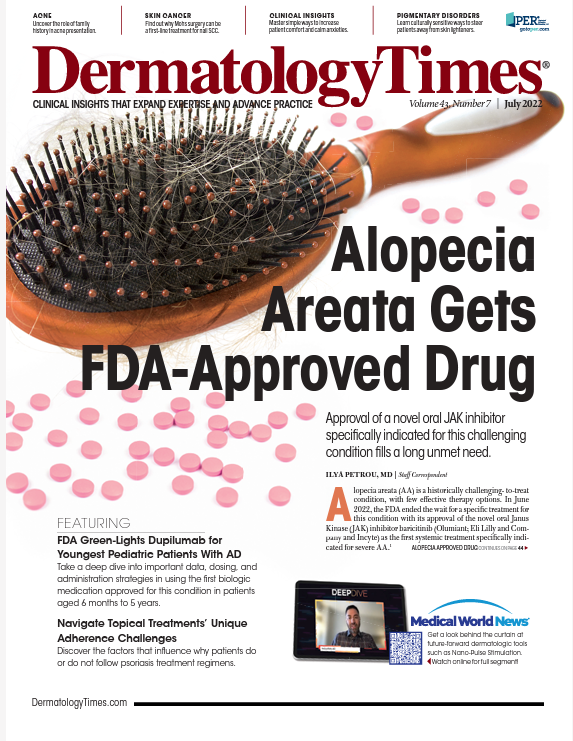- Case-Based Roundtable
- General Dermatology
- Eczema
- Chronic Hand Eczema
- Alopecia
- Aesthetics
- Vitiligo
- COVID-19
- Actinic Keratosis
- Precision Medicine and Biologics
- Rare Disease
- Wound Care
- Rosacea
- Psoriasis
- Psoriatic Arthritis
- Atopic Dermatitis
- Melasma
- NP and PA
- Skin Cancer
- Hidradenitis Suppurativa
- Drug Watch
- Pigmentary Disorders
- Acne
- Pediatric Dermatology
- Practice Management
- Prurigo Nodularis
- Buy-and-Bill
Publication
Article
Dermatology Times
Optimize Acids, Peels in Acne Scar Treatment
Author(s):
An expert offers insights into the who, how, and when of these combined therapies.
Despite the widespread applications of lasers in rectifying acne scarring and the use of other modalities including microneedling with platelet-rich plasma (PRP), chemical peeling remains a mainstay of treating atrophic acne scars.
"There is a tendency to throw the kitchen sink with everything in it on scars, especially with treating acne scars, but nothing is better than 100% TCA CROSS [chemical reconstruction of skin scars technique]1 for pitted scars and boxcar scars in any color skin,” Harold Brody, MD, FAAD, FASDS, clinical professor of dermatology at Emory University School of Medicine in Atlanta, Georgia, and past president of the International Peeling Society (IPS) USA, told Dermatology Times®.
In his presentation at the 2022 American Academy of Dermatology Annual Meeting, Brody noted that peels are more cost effective than lasers but can produce “competitively comparable” results if the dermatologist is equally skilled in both modalities.2 That can be a meaningful difference for patients evaluating acne scar treatment options because 2020 statistics from the American Society of Plastic Surgeons put the average cost of peels at $519 vs $1445 and $2509 for nonablative and ablative lasers, respectively.3
Brody noted that many dermatologists who specialize in medical dermatology may be unaware of recent advances in peeling. To help maximize the efficacy of this mainstay treatment, he shared his insights on how to more effectively use acids and peels and recommends that dermatologists seek out peeling workshops such as those offered by the IPS. “The goal,” he said, “is to convert rigid scars to distensible scars and then to elevate them with long-lasting fillers."
For patients with skin of color, it may be a question of changing the “how” and not the “what” of peels and acids.
"CROSS TCA is good in all skin types if performed carefully and properly without overlap,” Brody said. For patients with skin of color, he suggested 15% to 20% TCA, adding that “Jessner’s peel is always safe in skin of color as long as you do not apply too many coats.” When looking for postinflammatory hyperpigmentation (PIH), check beyond scar sites. “Look for pigment on the lines on the palms of the hands as indications of PIH,” he said. If PIH is suspected, he advised using hydroquinone bleaches immediately after healing and adding other bleaches if needed. Brody also noted that patients with skin of color should stop pre-care regimens a few days before the peel (those with lighter Fitzpatrick skin types may be able to continue until the day of the peel).
Tried-and-true techniques may be best when it comes to applying TCA.
Although some studies have experimented with the use of an empty insulin syringe to place the TCA in the scar,4 Brody does not recommend it. “An insulin syringe is not always easy to use and offers no advantage,” he said. “Toothpicks or micro–cotton tips are best for TCA.”
More may not be better.
“Combining microneedling or PRP, which both have a very, very small incremental improvement, with peeling isn’t completely evaluated and is evolving,” Brody said, adding that nonablative lasers do not have much effect on scars regardless of skin type. “Using sandpaper and/or spot peeling of scars combined with treatment with subcision in people of color, which is effective, hasn’t been compared to combination treatments,” he said.
Do not get locked in to 1 peel for all cases.
“For individual scars, phenol solution followed by subcision can be a good option,” Brody said.
Results depend on the dermatologist, not the patient.
“The initial and eventual outcomes are in the hands of the dermatologist, as there are operator differences in peeling [also true with lasers] and that can also affect patient downtime,” Brody noted in his presentation. He emphasized the importance of continuing education for dermatologists looking to improve their skill set with peels and acids.
Change may be on the horizon.
Keep an eye out for new methods of filling scars. Brody said that microdroplet silicone, an upcoming investigative treatment for scars in patients with skin of color, is getting “spectacular” results with a “terrific” safety record.
Disclosures
Brody listed the following relevant disclosures: Allergan Inc, Galderma Laboratories, L.P., and Merz Aesthetics.
References
- Bhardwaj D, Khunger N. An assessment of the efficacy and safety of CROSS technique with 100% TCA in the management of ice pick acne scars. J Cutan Aesthet Surg. 2010;3(2):93-96. doi:10.4103/0974-2077.69020
- Brody H, Ibrahami O. Do lasers have better outcome than chemical peels? Presented at: 2022 American Academy of Dermatology Annual Meeting; March 25-29, 2022; Boston, MA.
- American Society of Plastic Surgeons. Plastic surgery statistics report. Accessed June 7, 2022. https://www.plasticsurgery.org/documents/News/Statistics/2020/plastic-surgery-statistics-full-report-2020.pdf
- Horovitz T, Salameh F, Shehadeh W, Koren A, Artzi O. Painting CROSS TCA technique: modification of the CROSS method for the treatment of atrophic acne scars-case series. J Cosmet Dermatol. 2022;21(1):327- 330.doi:10.1111/ jocd.14611






